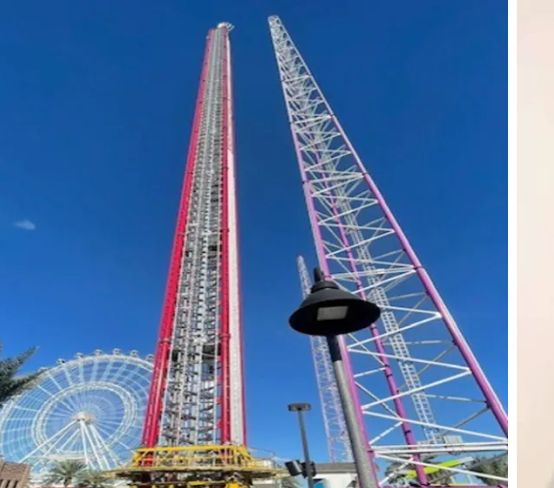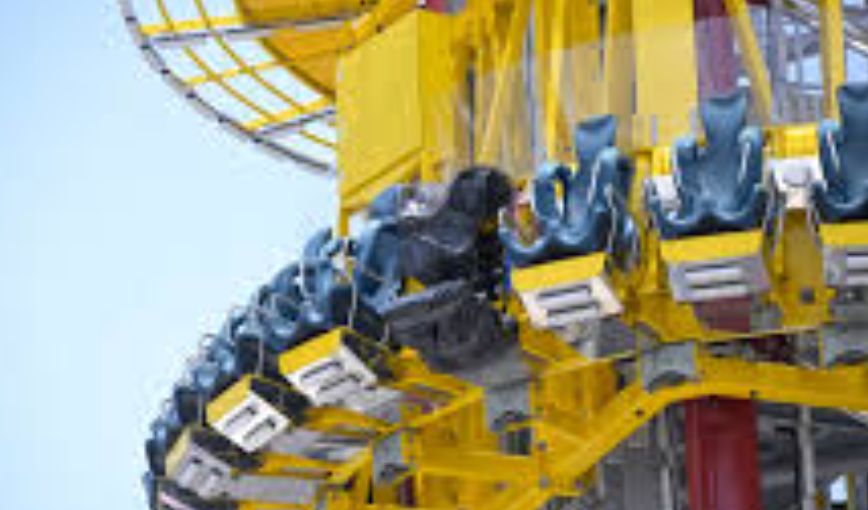Table of Contents
Imagine a giant swing, super tall, that drops you faster than a race car. That was the Orlando FreeFall at ICON Park. But on a sad day in March 2022, something terrible happened there. A young boy named Tyre Sampson, just 14 years old, went on the ride and tragically fell. This wasn't just an accident; it showed us some serious problems with how we keep people safe on amusement park rides. This is the story of what happened, why it happened, and how it changed things forever.
Key Aspect | Details |
|---|---|
Incident Date | March 24, 2022 |
Location | Orlando FreeFall, ICON Park, Orlando, Florida |
Victim | Tyre Sampson, 14 years old |
Cause of Death | Blunt force trauma from the fall |
Ride Height | 430 feet (world’s tallest freestanding drop tower) |
Ride Speed | Up to 70 mph |
Key Findings | Manual adjustment of seat sensor, exceeding weight limit |
Legal Outcome | $310 million awarded to Tyre's family from manufacturers |
Regulatory Change | Tyre Sampson Act in Florida mandates stricter ride safety measures |
Ride Status | Dismantled in October 2022 |

Tragic Orlando Free Fall Incident Introducing Deadly Failures
I. The Day Everything Changed at ICON Park

The Day Everything Changed At Icon Park
A Normal Day Turns Scary
Imagine going to an amusement park, excited for all the super fun rides. That's what it was like at ICON Park in Orlando. Kids were laughing, families were taking pictures, you know, the usual happy park stuff. Then there was this ride, the Orlando FreeFall. It was HUGE, like the tallest tower you could imagine, and it dropped you super fast. Everyone thought it was just a thrilling ride, a big experience. But on one day, that experience turned into something really scary. It was like a sunny day suddenly getting a big, dark cloud.
When the Unthinkable Happened
A young guy named Tyre was visiting the park. He was only 14, about the age of some of the older kids you might know. He got on the FreeFall, probably excited for the big drop. But then, something went terribly wrong. As the ride was coming down, Tyre slipped out. Think about that for a second. It's like being on a swing really high up, and suddenly, you're not holding on anymore. It was a moment that changed everything, turning a fun day into a really sad one. People were shocked, and it made everyone wonder, "How could this happen?"
II. Unraveling the Chain of Errors

Unraveling The Chain Of Errors
A Simple Switch, A Big Problem
Okay, so think about this: a ride like the FreeFall has to be super careful, right? It's like a giant seesaw, and you want to make sure everyone's strapped in tight. There are these little sensors on the seats, kind of like a grown-up checking if your seatbelt is clicked. If the sensor says "nope, not safe," the ride shouldn't even start. But on this ride, someone messed with those sensors. It’s like unplugging the smoke detector because it beeps too much, even though there might be a fire. They made it so the ride could run even if the harness wasn't really locked right. That's a huge no-no, and it was the start of a bunch of bad decisions.
Too Big for the Ride?
Now, imagine trying to fit a really big puzzle piece into a small hole. It just won't go, no matter how hard you push, right? Well, Tyre was a big guy for his age, and it turned out he was actually over the weight limit for the FreeFall. The rules are there for a reason, like the height chart for rollercoasters. If you're too tall or too short, you can't ride because it's not safe. Ignoring the weight limit was another mistake, like skipping a step when you're building a tower – it makes the whole thing wobbly.
A Dangerous Shortcut
Think of the ride operators as the pilots of an airplane. They have a checklist of things to do before takeoff to make sure everything is safe. One of those checks is making sure everyone's harness is locked. But because someone had messed with the sensors, the operators might not have seen that Tyre's harness wasn't really secure. It's like a pilot taking off even though one of the doors isn't closed properly. Taking shortcuts with safety is never a good idea, especially when you're dealing with something as serious as a giant drop tower.
III. Justice for Tyre: Legal Battles and Lasting Changes

Justice For Tyre Legal Battles And Lasting Changes
After something this awful happens, you just know people are gonna want answers, right? Tyre's family, understandably, was heartbroken and angry. They wanted to know why this happened and who was gonna be held responsible. So, like in a movie where the good guys fight for what's right, they took the people who ran the ride and the ones who made it to court. Think of it like this: if your bike breaks because it was put together wrong, you'd go back to the store and say, "Hey, this isn't fair!" Tyre's family did something like that, but on a much bigger scale. They filed a lawsuit, which is a fancy way of saying they went to court to get justice for what happened to Tyre. They argued it wasn't just an accident; it was because people didn't do their jobs properly and cut corners on safety. It's like if a chef didn't wash their hands and someone got sick – that's not just bad luck, that's someone not following the rules.
IV. More Than Just a Ride: A Community's Response
Mourning Together
When something this terrible happens, it’s like a punch to the gut for everyone. The mood around ICON Park wasn't just sad; it was heavy, like the air before a storm. People who lived nearby, folks who'd visited the park, even those who just heard about it on TV – we all felt it. It’s like when your school loses a big game; everyone's down. But this was way worse. There were flowers and stuffed animals piled up near the entrance, a makeshift memorial. It was our way of saying, "We remember," and "We're hurting with you." Seeing that, you knew Tyre wasn't just a news story; he was someone's kid, someone we felt connected to.
"Take It Down!" The Call for Change
Pretty quickly, a lot of people started saying the ride itself had to go. It was like seeing the broken swing set where your friend got hurt – you just don't want it there anymore. A petition started going around, like an online vote, saying, "Get rid of the FreeFall." I signed it, and so did tons of others. It wasn't about being angry, though there was plenty of that. It was about not wanting to see that thing standing there, a constant reminder of what happened. For Tyre's dad, when they finally took it down, he said it was a "happy cry." That makes sense, right? Like a small bit of peace in a really awful situation.
V. A New Chapter for Amusement Park Safety
You know, after something as awful as the Orlando FreeFall thing, you'd hope some good comes out of it, right? It's like scraping your knee really bad on the playground – you learn where not to run next time. Well, that's kinda what happened with amusement park safety. Folks in charge started thinking, "Okay, we messed up, how do we make sure this never happens again?" And that's where the Tyre Sampson Act comes in. Think of it like a new rulebook for amusement parks, especially for those super tall rides. Before, it was maybe a little like the Wild West, with different parks doing their own thing. But now, thanks to this law, there are some serious must-dos. For example, any ride taller than 100 feet now needs seatbelts AND harnesses. It's like wearing both suspenders and a belt – extra safe! Plus, there are now unannounced check-ups, kind of like surprise quizzes for the parks, making sure they're always following the rules, not just when they know someone's watching. It’s about making sure everyone can have fun without holding their breath the whole time.
VI. Remembering Tyre, Building a Safer Future
The story of the Orlando FreeFall is a sad one, a stark reminder that safety can never be taken for granted, especially when it comes to thrilling rides. Tyre Sampson's young life was cut short, but his story pushed for important changes. Because of what happened, rides are now safer, with more rules and checks. While we can never undo the past, the hope is that the lessons learned from this tragedy will help protect others and ensure everyone can enjoy amusement parks without fear.